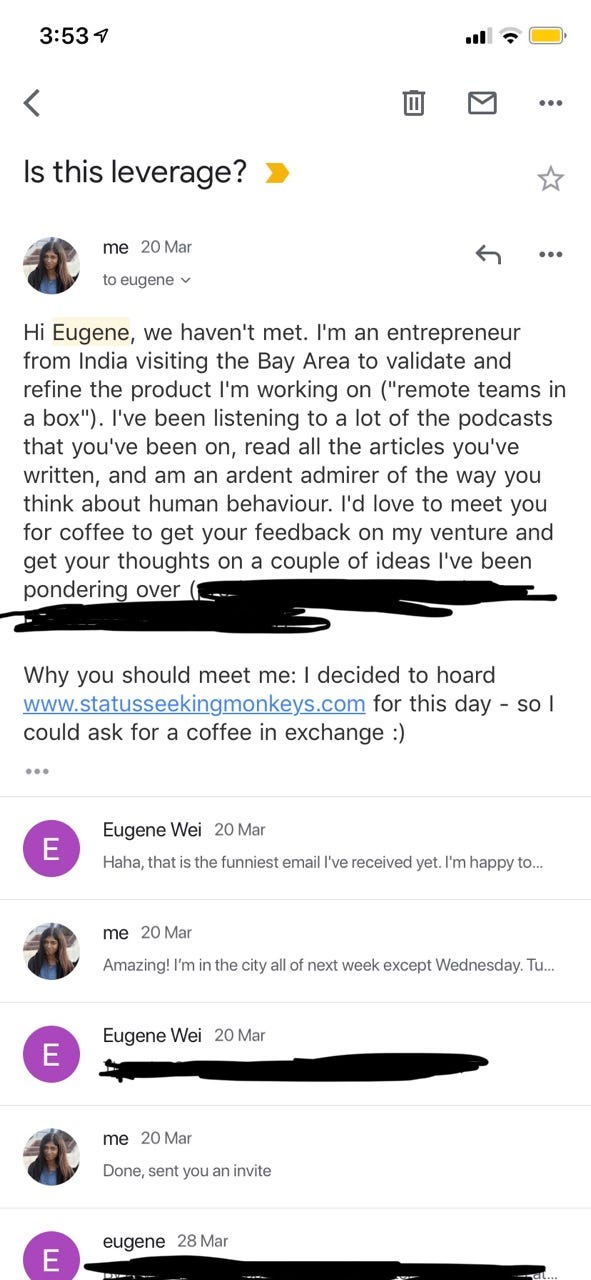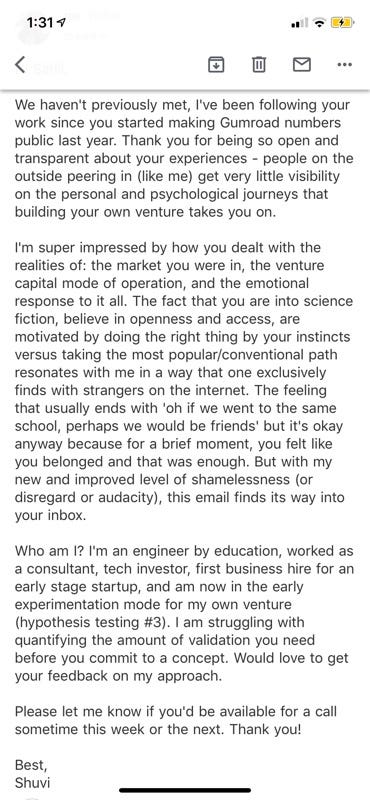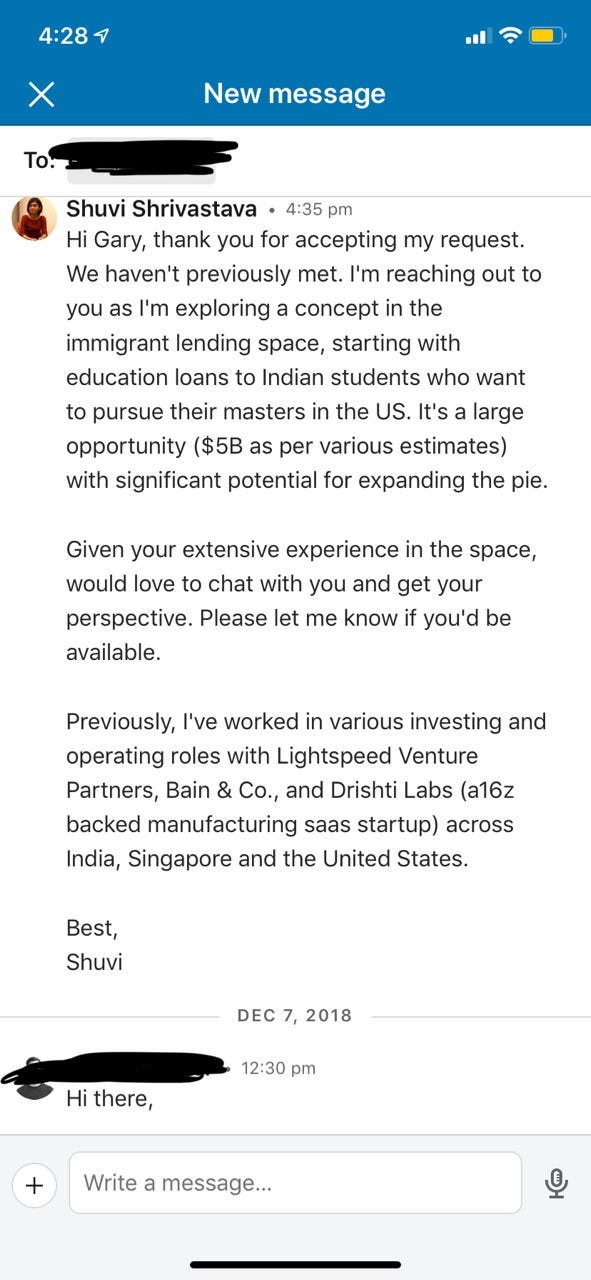Having spent time with entrepreneurs over the last many years, I’ve seen people consistently struggle with getting access to needle-moving individuals in the first few months. I’m referring to your first customers (B2B), first set of beta users (B2C), first employee taking a bet with her time, first investor betting her money, first industry insiders who will go on to become company advisors. For this post, I’ll focus on the first step in that journey: reaching key individuals (customers, co-founders/employees, advisors, investors) that would materially impact the survival and growth of the company. While warm intros and existing networks are obviously the easiest and most effective pools to tap into, you don’t always have sufficient resources in the area you’re digging into. You can read the frameworks I follow below or scroll down directly to see some funky cold emails I’ve sent over the years.
My starting hypothesis, and one that has largely proved out till now, is that most people actually want to help. You just have to make it very easy for them to help you.
1. Be extremely direct and specific about what you want: When I was in the Bay Area for the first time and starting to get excited about working there, a friend strongly recommended I email people saying I’m looking for work versus asking for coffee and beating around the bush. Worked wonderfully for me — cause folks I was reaching out to now immediately knew what was on the table and could give me quick Yes/No answers. Taking this learning to my entrepreneurial journey: while pinging people on LinkedIn to get their perspective on a space, my conversion rate on emails substantially went up when I had very specific questions in the email directly OR where I offered to follow up with a list of questions in advance if they were okay taking the time to chat. I have personally always responded to cold queries when they’ve been crisp enough for me to quickly type out a response. I have also sent a lot of “let’s get coffee and exchange notes” emails in life — and they sometimes work if both people are enthusiastic about networking + stand to gain equally, but not when there’s a more unilateral agenda.
2. Give them the context or material that can expedite ‘next steps’: If you’re asking an acquaintance for an introduction, append a note they can forward to the person in question. If you’re sending a cold LinkedIn request, add a couple of lines providing context so you stand out among the dozens of requests popular executives get on the platform today. If you’re asking for time to pitch your product, include a document that gives them a quick overview of the problem you’re solving, how you would be able to solve it, and why you’re better than what they’re currently using. If you’re looking for advice, share what you’re building, what you have learned so far, what parts of their experience might be most relevant to the questions you have. Offer to be directed to the right person in their team if they’re too occupied or not best qualified to answer. The meta guideline here is simple: empathize. Imagine yourself in the shoes of the recipient, what would I want to see or know to be able to quickly respond to a request for time? The lower the friction or cognitive load in providing support, the more likely it is that you’ll hear back.
3. Establish credibility: If you have a string of brand names on your resumé, excellent, mention that (in a non-trashy way). If you don’t or you think your recipient gets enough emails from people like you, get creative to stand out — spend ~20 minutes researching the person to understand what they’ve done in life, what they enjoy, what they stand for that you also believe in. Fun fact: I’ve connected with a surprisingly high number of people basis our shared interest in writing (terrible) science fiction. The need for connection is built into our DNA, telling someone you’re a part of their tribe in some way always helps. Just the fact that you’ve taken the time to research that person implies that her input matters significantly to you and this becomes your Proof of Work. Similarly, if you’re selling software to an enterprise, take the time to speak with some industry/company insiders to understand what’s broken in their workflow that you can help fix. Eg. A cohort of cars in Austin rolled back? Good time to pitch your manufacturing QC product. Just raised a large Series C? Sign up for the recruitment database that promises to reduce time-to-offer in half.
4. Follow up: There’s no shame in following up, even twice or thrice. Sometimes people are just going through a super busy phase at work / personal life, so maybe don’t send 3 follow-ups in 3 days, but don’t assume that people aren’t interested in helping you. You’re just not going to be a priority most of the times, c’est la vie. I typically followed a cadence of T, (i) T+2, (ii) T+7, (iii) T+21 days. “Bumping this back up”, “It seems like this isn’t the best time for you, when should I write back?”, “What would you like to see for this to be more interesting for you / your company?” And well, you’ll never be at a 100% response rate with cold outreach, but it’s always useful to know your funnel and the levers you can pull to optimize it.



That’s it, folks. Do share if you have stories around getting access to interesting people, would love to hear and add to this post.
May your calendars always overflow!
Authors



